A beautiful garden is a joy to behold. The best way to create an eye-catching space outdoors is to decorate it with flowering plants, fascinating vegetation, or ornamental grasses.
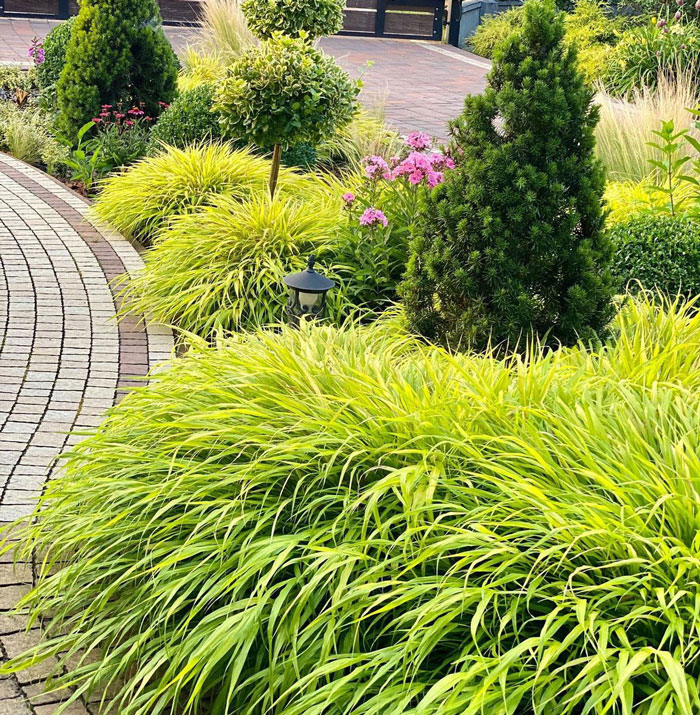 Image credits: danusiaaa20
Image credits: danusiaaa20
Imagine sitting on your balcony or porch swing and hearing the gentle rustle of ornamental grasses in the breeze. The beautiful texture of these fascinating plants can enhance every garden. They also happen to look great when they’re dried as a decoration. There was a massive craze for dried Pampas grass in 2021.
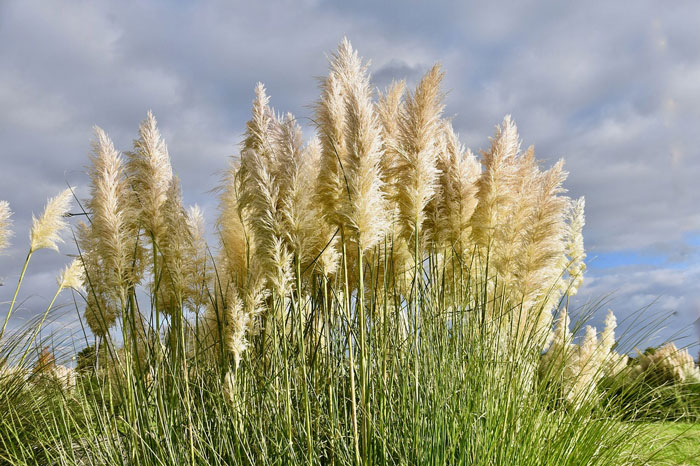 Image credits: JACLOU-DL
Image credits: JACLOU-DL
What Are Ornamental Grasses?
Ornamental grasses are decorative grass plants chosen by many gardeners to enhance their gardens with additional texture and color. They vary in height, some reaching up to 15 feet tall, whereas others are mainly used as ground covers. Many decorative grasses are colorful, with some producing showy flower heads lasting weeks or sometimes months. You will mostly find perennial ornamental grasses, but there are a few annual varieties, such as hare’s tail or purple millet. The perennial grasses are low maintenance and last two or more years.
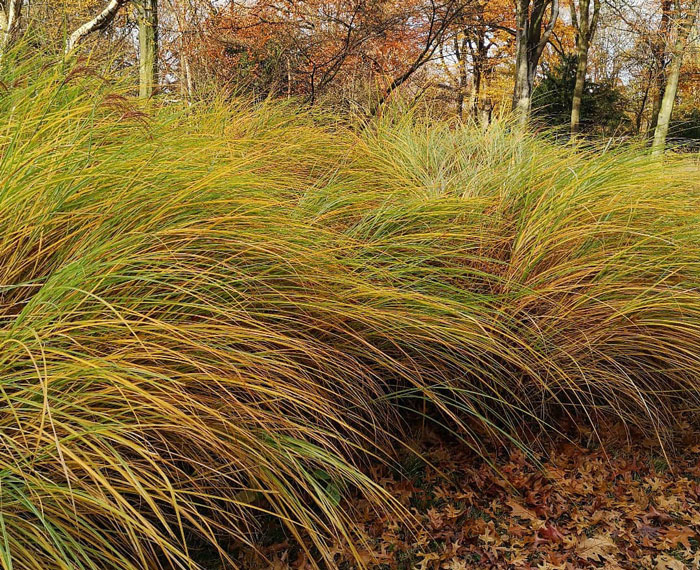 Image credits: camayenne.art
Image credits: camayenne.art
Ornamental grasses are usually grown in cold temperatures because of their hardiness and come in many varieties, from tall and short to shade and sun-loving to even deer-resistant. Tall ornamental grasses can be used as hedges or provide a natural privacy barrier, while short ornamental grasses can complement your flowers and other plants and work as borders.
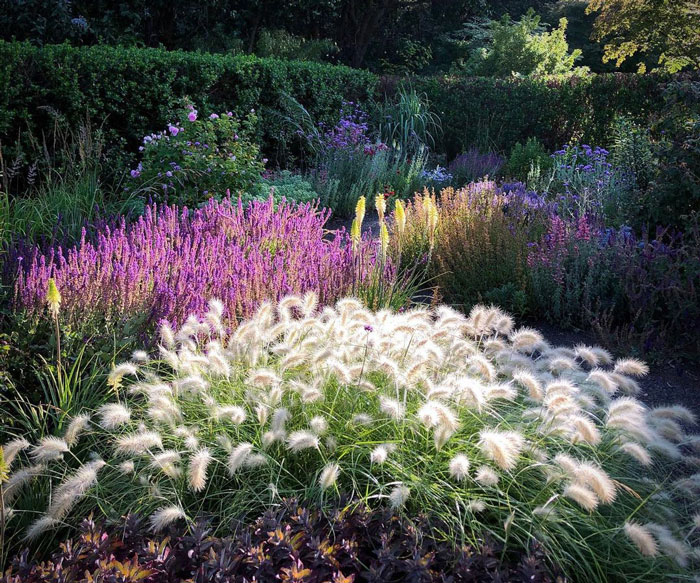 Image credits: simon_rickard
Image credits: simon_rickard
With so many varieties of decorative grasses, knowing what types you want to start growing might be a challenge. Whether you want to fill in blank spaces in the garden, make a shrubbery bed look lush, or bring some color to the yard, these 15 different types of ornamental grasses do it all.
15 Types of Ornamental Grasses to Add to Your Garden Garden
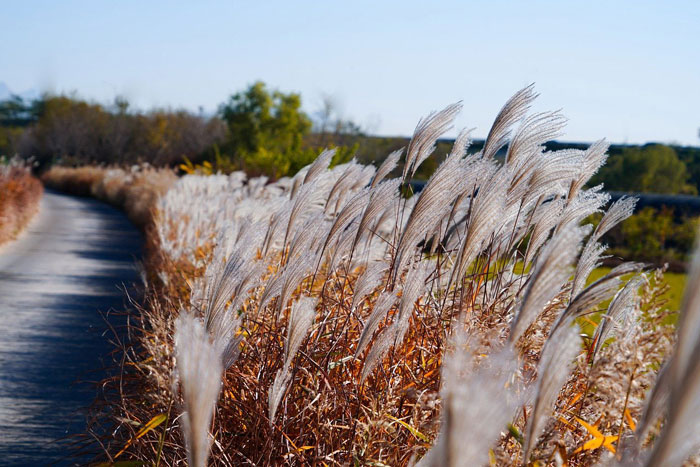 Image credits: KIMDAEJEUNG
Image credits: KIMDAEJEUNG
When landscaping with ornamental grasses, choosing them according to their size and unique features is best. Different grasses are better suited for shade, erosion prevention, or to become hedges. We have grouped these decorative grasses by size and included their best use. We’ll let you choose the one that fits your vibe.
Pro tip: many people have issues with deer grazing in their gardens and damaging plants. To help protect your plants from deer, we have also added some deer-resistant grasses to the list.
Tall Ornamental Grasses
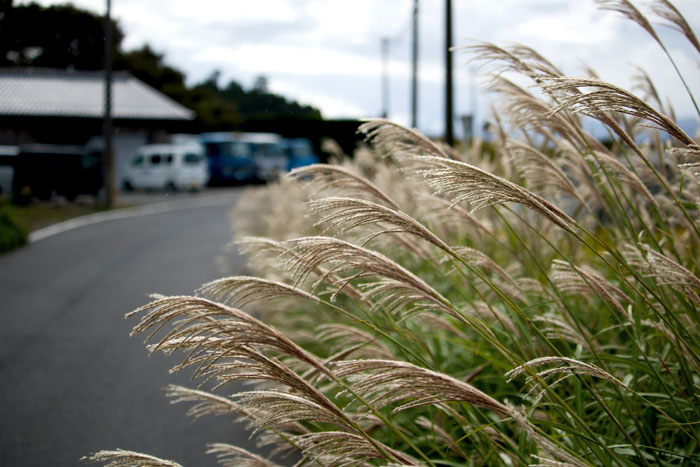 Image credits: Yuta Koike
Image credits: Yuta Koike
Many people grow tall ornamental grasses for privacy or to create beautiful foliage in their backyard. These plants need enough space to grow well and reach a mature size. Here are a few of the most popular tall decorative grasses.
Pampas Grass
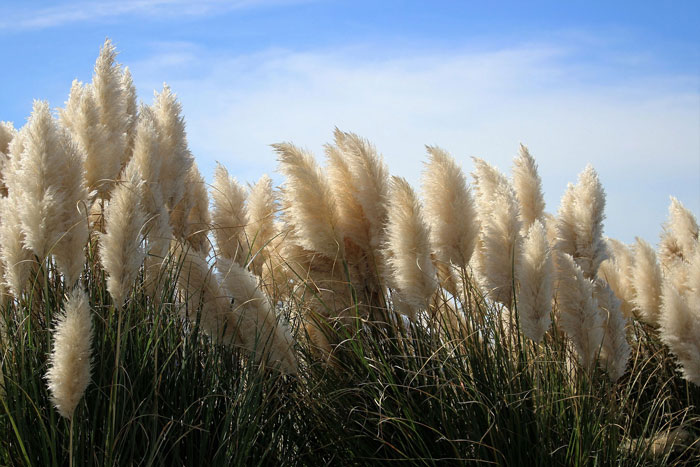 Image credits: wildflower1213
Image credits: wildflower1213
One of the best drought-tolerant ornamental grasses
Pampas grass is a member of the Poaceae family. These warm-season grasses are tall and well known for their feather-like white plumes that grow above blue-gray foliage. The white flower plumes are usually seen in late summer and fall.
Pampas are pretty hardy and can thrive in tough spots. If you plant them close together, they will grow and enclose a space, creating enough privacy. Ensure their roots can’t spread too far, or they’ll become invasive.
- Scientific name: Cortaderia selloana
- Light: Full sun
- Soil: Well-drained
- Water: Water intermittently; natural rain is best
- Hardiness zones: 6–10
- Average size: Up to 5 feet tall
- Deer-resistant: Yes
Chinese Silver Grass
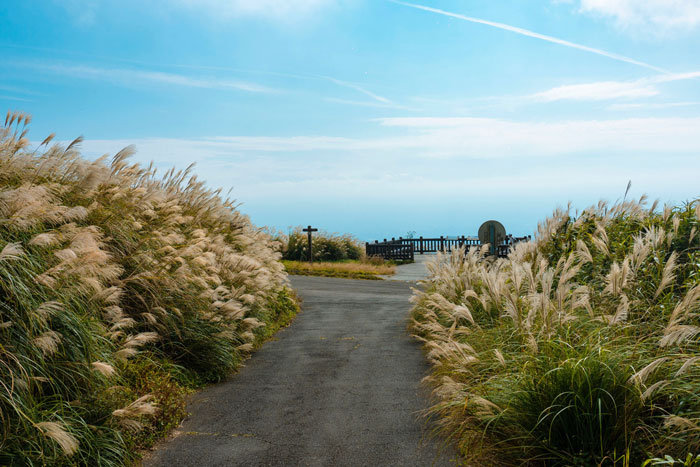 Image credits: Jimmy Liao
Image credits: Jimmy Liao
Best for growing in moist conditions
Chinese silver grass is a clump-forming ornamental grass native to Eastern Asia. They thrive in moist soils and come in many colors, from silver and pink to shades of purple and red. Chinese silver grass can transform your yard into a cool and breezy space—you’ll be dazzled seeing it gently rippling in the wind.
Chinese grass needs minimal maintenance; you only need to cut it back once in spring to make way for new growth. They grow feathery-plumed heads, appearing in late summer or early fall.
- Scientific name: Miscanthus sinensis
- Light: Full or partial sun
- Soil: Moist or boggy soil
- Water: Lots of water, but don’t pour from overhead
- Hardiness zones: 5–9
- Average size: 3–10 feet
- Deer-resistant: Yes, it is also rabbit-resistant
Feather Reed Grass
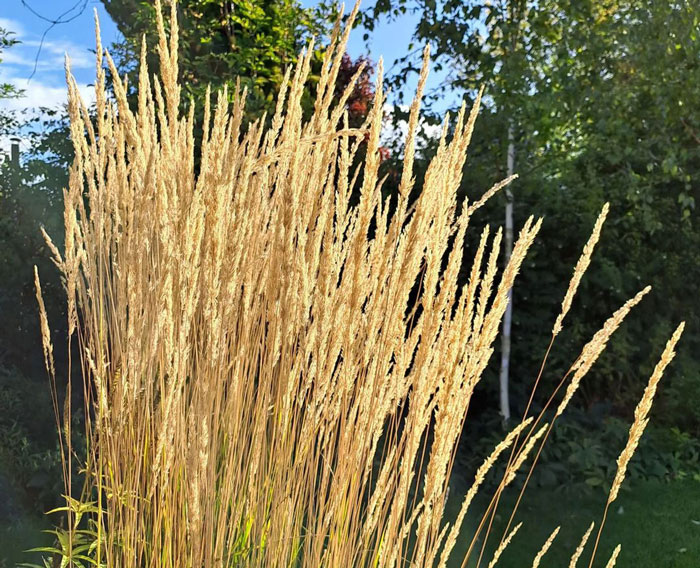 Image credits: 04lucy_y
Image credits: 04lucy_y
Best for landscaping
This is one of the best ornamental grasses to make your garden look beautiful and elegant. The plant’s sharp, vertical accent adds plenty of color and texture to the yard. Since they grow tall, feather reed grass looks delicate and graceful, swaying in the breeze. They might just end up becoming your favorite plant.
They get their name from the seeds at the tips of their featherlike blades, allowing them to quickly spread into random places.
- Scientific name: Calamagrostis acutiflora
- Light: Full direct sun
- Soil: Well-drained, loamy soil
- Water: Daily watering
- Hardiness zones: 5–9
- Average size: Up to 6 feet
- Deer-resistant: Yes
Zebra Grass
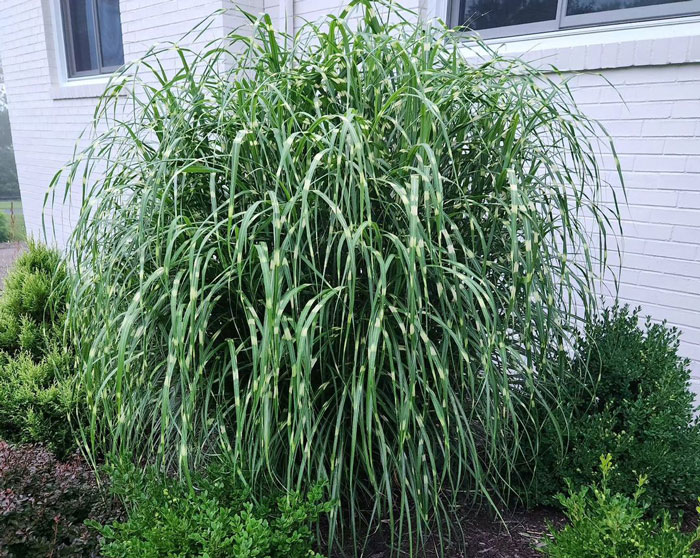 Image credits: alicjaguziewiczmilardo
Image credits: alicjaguziewiczmilardo
Most unique pattern
This tall grass has an elegant arching form and produces colorful blooms. Its stunning variegated leaves with creamy golden stripes can add contrasting texture to your garden. The color becomes golden during the fall, turning beige in late fall.
The cultivar’s name, “Zebrinus,” refers to the stripes on the plant, which are like a zebra’s stripes. Zebra grass grows relatively fast and dies in winter, only to return in spring. This exotic and tropical-looking grass should be placed with green vegetation to add pops of color.
- Scientific name: Miscanthus sinensis ‘Zebrinus’
- Light: Direct sun
- Soil: Chalk, sand, or clay
- Water: It doesn’t need much watering
- Hardiness zones: 5–9
- Average size: Up to 7 feet
- Deer-resistant: Yes
Umbrella Grass
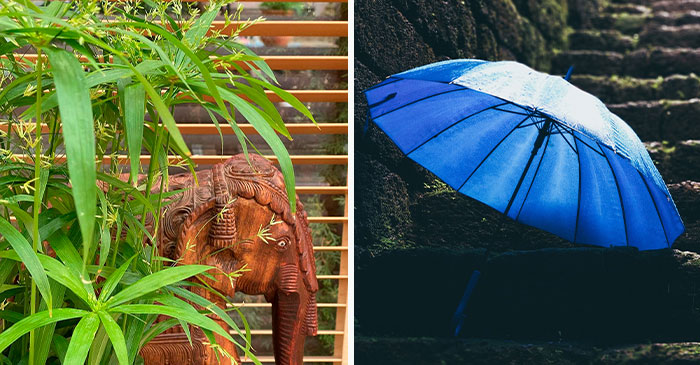 Image 1 credit: my_green_home_life
Image 1 credit: my_green_home_life
Image 2 credit: Ravi Kant
One of the best indoor and shade-tolerant ornamental grasses
This is an easy-to-grow grass, also known as umbrella palm or umbrella sedge. It gets its name from its bracts, which resemble umbrella spokes. The plant’s leaves grow unusually by clasping the stem, making them hard to distinguish. Speaking of umbrellas, here are some cute animals with natural umbrellas.
These larger grasses have nearly 600 varieties and are native to tropical locations. Even though the mature height of the umbrella plant is almost 6 feet, it can be grown as an indoor plant. Since this grass grows best in part shade, you can keep it inside near a windowsill.
- Scientific name: Cyperus alternifolius
- Light: Part shade
- Soil: Moist, boggy soil
- Water: Lots of watering
- Hardiness zones: 8–9
- Average size: Up to 6 feet
- Deer-resistant: No, only rabbit resistant
Bamboo Grass
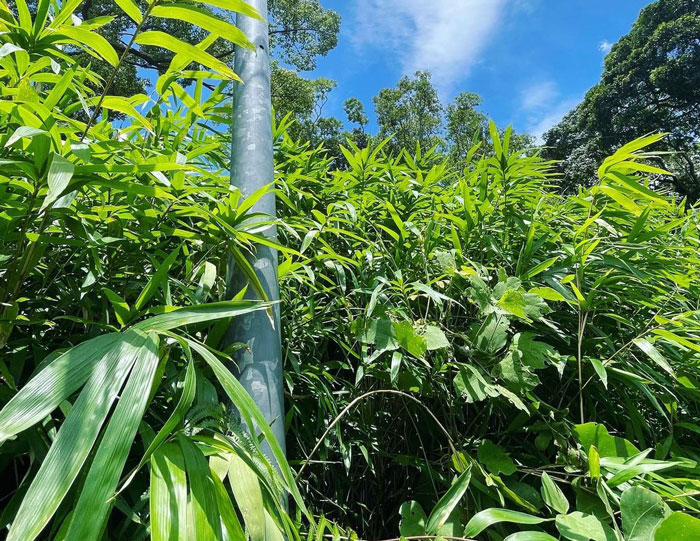 Image credits: twotrees.nv
Image credits: twotrees.nv
Fastest-growing ornamental grass
Bamboo grass is a tall perennial plant that grows in a clump and produces bright green leaves. Like many grasses, it grows very quickly and reaches staggering heights. That’s why it’s so popular in landscaping. You can plant it in a way that helps add privacy to your yard. Bamboo grass grows best in places with moderate humidity.
- Scientific name:Bambusoideae
- Light: Full sun to part shade
- Soil: Well-drained sandy or loamy soil
- Water: Twice a week
- Hardiness zones: 5–6
- Average size: 10 feet plus
- Deer-resistant: Yes
Medium Ornamental Grasses
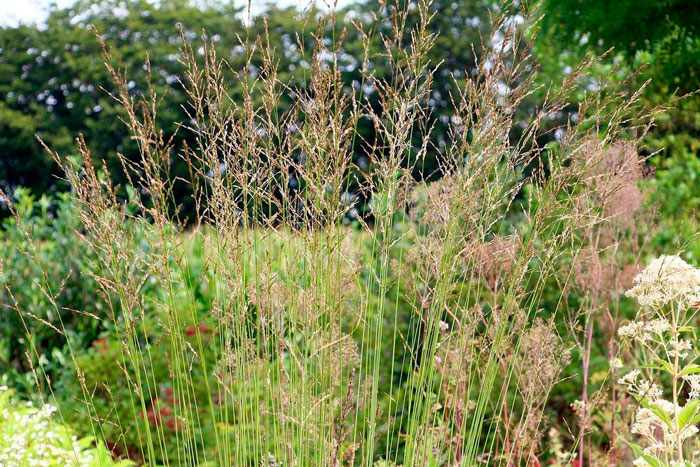 Image credits: tuinrondom
Image credits: tuinrondom
These types of ornamental grasses are best for creating hedges or vegetation layers without sacrificing too much space in your yard. You can use them to contrast with other plants or keep them as a standout piece in your garden.
Switchgrass
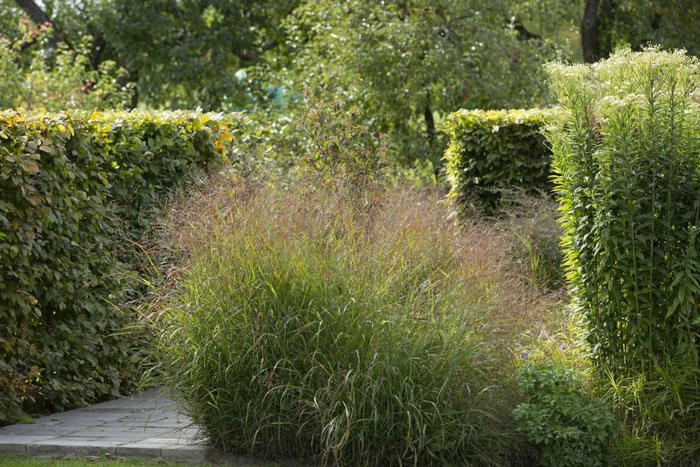 Image credits: manogardenstories
Image credits: manogardenstories
Best for erosion control
These warm-season grasses are native to North America. Switchgrass produces reddish-purple seed heads, which change to pale yellow in the fall. Some varieties have blue-gray foliage, which turns gold or red in autumn. These narrow and tall grasses are ideal for tight garden spaces.
An interesting plant fact—switchgrass can grow in droughts and high temperatures. You can also cultivate them to help prevent erosion, and they are known to restore prairie meadows. Switchgrass has also been hailed as the next leading biofuel in the United States because it is more efficient than corn.
- Scientific name: Panicum virgatum
- Light: Full or partial sun
- Soil: Sandy or moist soil
- Water: Does not need much water and is drought-tolerant
- Hardiness zones: 3–9
- Average size: 3–6 feet
- Deer-resistant: Yes
Little Bluestem
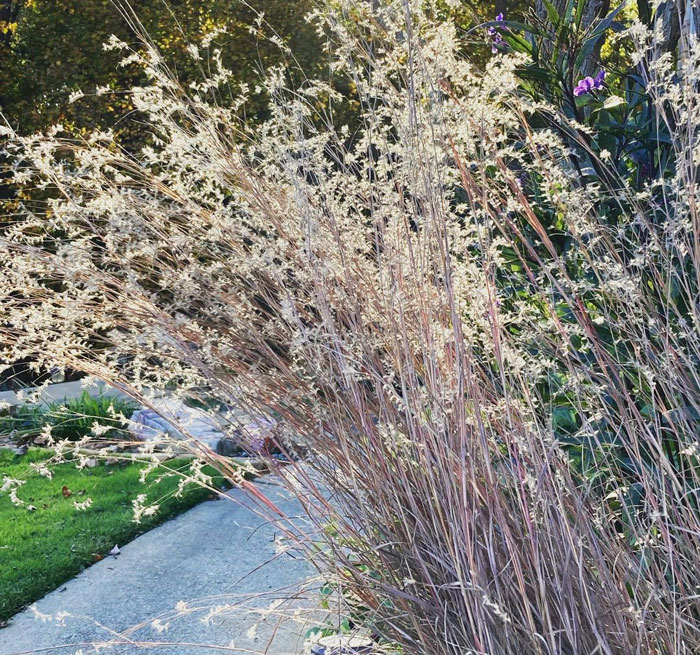 Image credits: southern_meadows
Image credits: southern_meadows
Best choice for self-seeding grass
Little bluestem is also known as beardgrass. It is a rampant self-seeder that grows naturally and forms large colonies over time. Growing little bluestem also provides an excellent habitat for birds and insects.
These beautiful plants grow wildly in large clumps, especially in fields and meadows. They produce gray-green leaves that often turn purple, red, and orange in autumn. Little bluestem maintains its color almost through the winter.
- Scientific name: Schizachyrium scoparium
- Light: Direct sunlight
- Soil: Well-drained soil
- Water: Moderate water
- Hardiness zones: 4–9
- Average size: Up to 3 feet tall
- Deer-resistant: Yes
Purple Fountain Grass
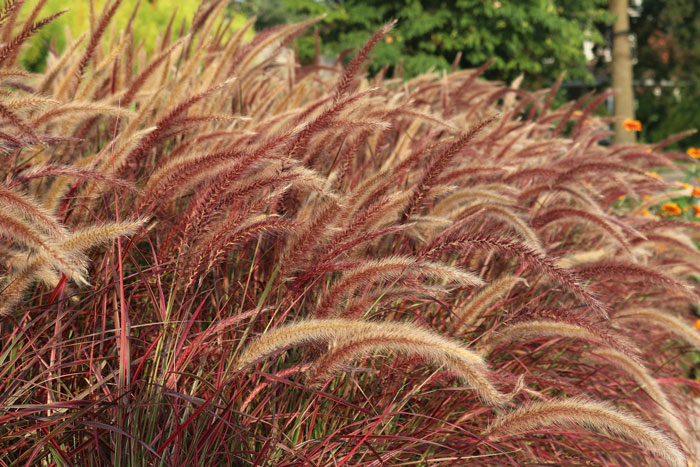 Image credits: Alefar
Image credits: Alefar
A popular choice among low-growing ornamental grasses
Purple fountain grass is known for its arching spikes with purplish flowers. These delicate flower spikes stand out gracefully from their long burgundy leaves. They are eye-catching and very popular ornamental grasses preferred for flower gardens. They look striking next to light green or silvery flowers and plants. Many people also use the feathery seed heads from this plant to make dried flower arrangements.
If you look after your purple fountain grass, it will grow well all year round. When you notice it spreading out too much, remove dead flower heads. You can keep cutting it until it is at a suitable height.
- Scientific name: Pennisetum setaceum ‘Rubrum’
- Light: Prefers sun with a bit of shade
- Soil: Well-drained and moist
- Water: Regular watering
- Hardiness zones: 9–10
- Average size: Up to 5 feet
- Deer-resistant: Yes
Elephant Grass
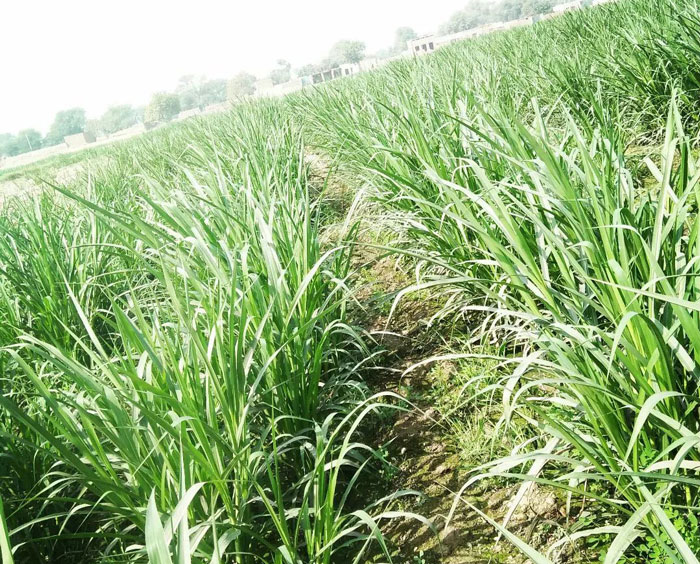 Image credits: pakagrin
Image credits: pakagrin
Best multipurpose grass
Elephant grass, also known as Napier grass or Uganda grass, is a tropical plant native to the African grasslands. These plants require minimal effort to maintain. Elephant grass produces leaves with fine hairs. Its flowers are cylindrical at the top of the stem and have delicate flower spikes. You can use elephant grass as mulch in garden beds or as a way to control weeds.
A cool thing about Elephant grass is that you can actually eat its shoots and leaves. They can be cooked to make soups and stews. According to a 2022 study published in the Scientific African Journal, elephant grass leaves also have diuretic properties.
- Scientific name: Pennisetum purpureum
- Light: Full direct sunlight
- Soil: Rich, deep loamy soil
- Water: Requires daily watering
- Hardiness zones: 8–11
- Average size: 3–10 feet
- Deer-resistant: Mildly
Small Ornamental Grasses
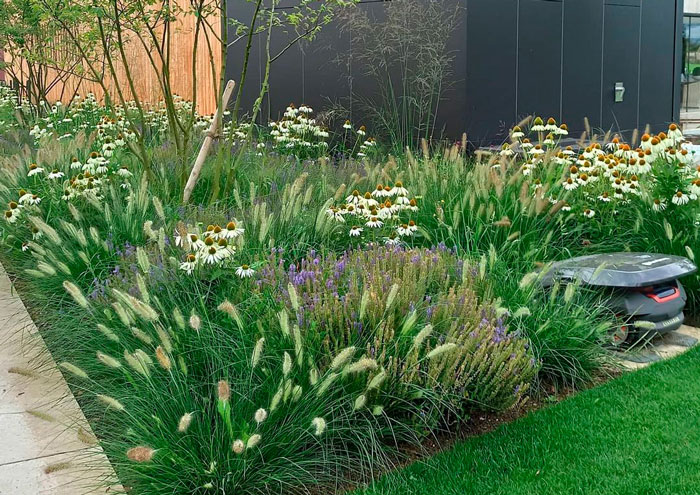 Image credits: studio_marcelmetzger
Image credits: studio_marcelmetzger
Dwarf ornamental grasses are perfect for small containers, edging yards, or bordering small vegetative patches. They are easier to start with and don’t take as much effort as larger ornamental grass varieties.
Carex Little Midge
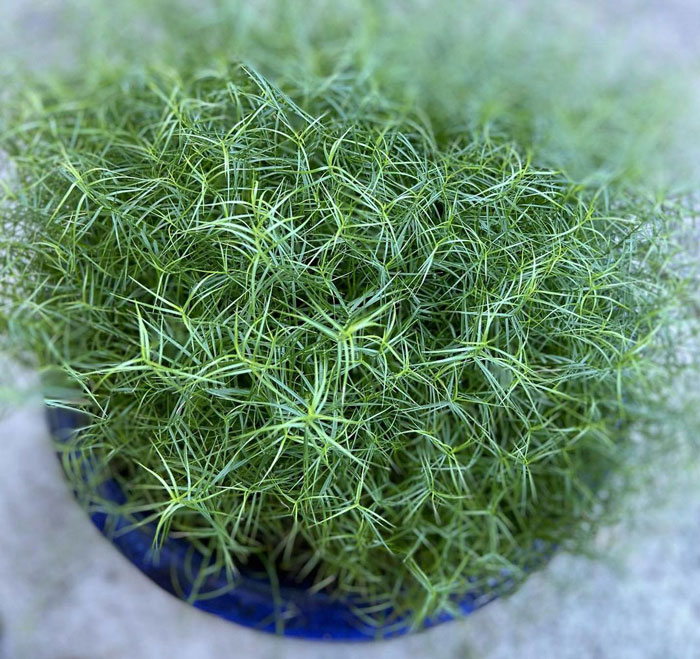 Image credits: cherry.ong
Image credits: cherry.ong
Most unusual shape
Carex sedge grass is part of a large genus of plants in the Cyperaceae family, and it has more than 2,000 species worldwide. You can find carex in many habitats, from wetlands to forests and even deserts. These ornamental grasses need consistently moist soil but are surprisingly adaptable to other growing conditions.
The Little Midge variation is a miniature semi-evergreen grass that grows in clumps. It produces bright green leaves that grow in an interesting geometric pattern. This ornamental grass doesn’t produce flowers. It is best suited for indoor container gardens or to be placed at the front of a garden bed.
- Scientific name: Carex muskingumensis ‘Little Midge’
- Light: Partial or complete shade
- Soil: Moist and well-draining
- Water: Consistent watering
- Hardiness zones: 3–9
- Average size: 10–18 inches
- Deer-resistant: Yes
Blue Fescue Evergreen Grass
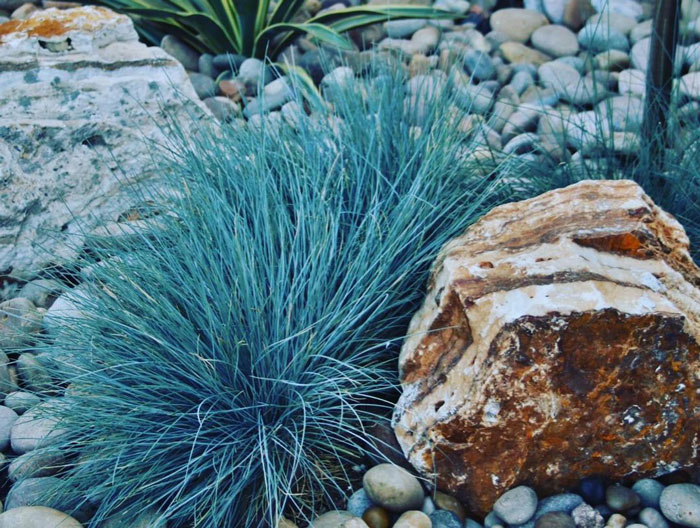 Image credits: californiaplantscapes
Image credits: californiaplantscapes
Best choice among evergreen ornamental grasses
Blue fescue is a drought-tolerant hardy plant that can grow even in rock gardens. It grows in clumps and produces uniform balls of foliage with a blue hue and feathery straw-like stalks. The flower spikes also have stunning and dramatic colors.
You can cultivate this lower-growing evergreen grass in small crevices, containers, or tight spaces. They can also be used as hanging plants indoors.
- Scientific name: Festuca glauca
- Light: Partial sun
- Soil: Well-drained soil but can also grow in rock gardens
- Water: Once or twice a week
- Hardiness zones: 4–8
- Average size: Up to 1 foot
- Deer-resistant: Yes
Dwarf Mondo Grass
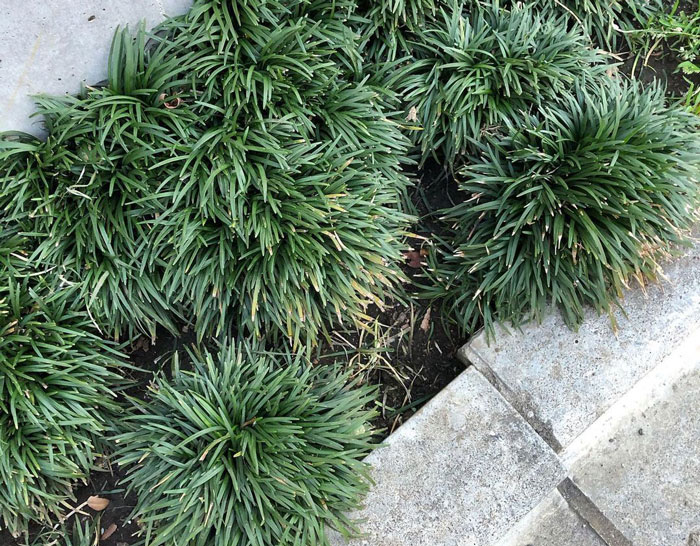 Image credits: tabananasampo
Image credits: tabananasampo
Best choice among deer-resistant ornamental grasses
The dwarf mondo grass is considered one of the best low-maintenance plants. You can cultivate it as a low-light indoor plant or place it in shady spots in your yard. A tremendous benefit of this grass is that it holds up nicely to light foot traffic. You won’t need to mow it more than once a year.
Dwarf mondo grass has tiny flowers that aren’t too showy. But it also produces blue berries that are hidden in the foliage. Once the flower blooms, you can enjoy the berries and use the seeds to propagate the plant.
- Scientific name: Ophiopogon japonicus
- Light: Partial shade
- Soil: Rich and well-drained soil
- Water: Consistently moist but not soggy
- Hardiness zones: 6–10
- Average size: 4–6 inches
- Deer-resistant: Yes
Japanese Forest Grass
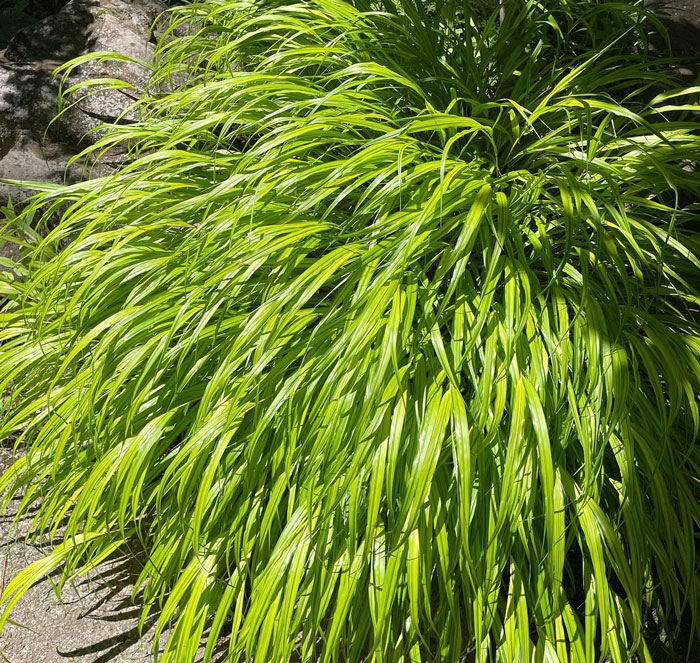 Image credits: tromugi
Image credits: tromugi
Best choice for pest-resistant
Japanese forest grass is a wonderful plant that hardly ever has problems with pests. You can grow them as indoor container plantings or place them in the corners of your garden beds. It produces tiny flowers that aren’t very remarkable, but the vibrant greenish-yellow hues of the grass truly stand out.
Since it is a slow-growing plant, you can wait until spring or early summer to divide it for propagation. You don’t need to prune them or fuss about the grass too much. Some people spread mulch over the ground to help keep the soil cool and retain moisture for their growth.
- Scientific name: Hakonechloa macra
- Light: Partial sunlight
- Soil: Moist and well-drained
- Water: Frequent watering
- Hardiness zones: 4–9
- Average size: 1–2 feet
- Deer-resistant: Yes
Pink Muhly Grass
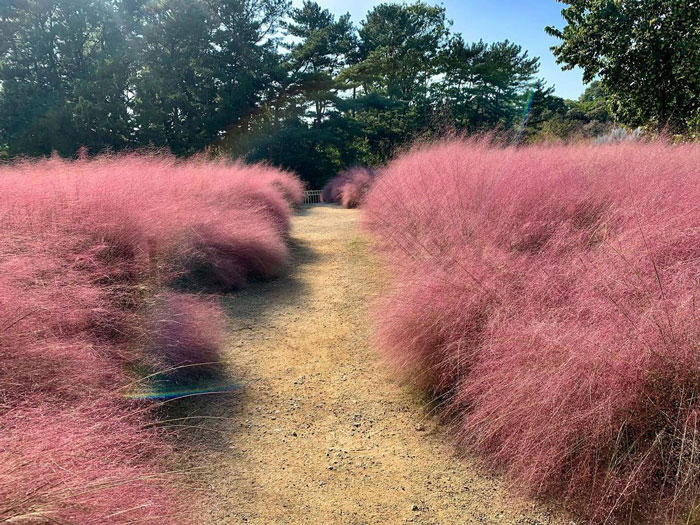 Image credits: sayuriwhite
Image credits: sayuriwhite
One of the best choices among non-invasive ornamental grasses
Very few ornamental grasses can rival pink muhly when it comes to color. These plants produce bright pink seed heads from spring through fall that look like cotton candy. Their eye-catching colors help create a soft texture in the yard, which looks especially lovely in the early evening. The plant also maintains its pink clusters during winter.
Pink muhly grass is surprisingly easy to grow, and you will get many blooms year after year. It’s a wonderful addition to a low-maintenance garden.
- Scientific name: Muhlenbergia capillaris
- Light: Full sun with partial shade
- Soil: Drier soil
- Water: Does not need much
- Hardiness zones: 6–9
- Average size: 2–3 feet
- Deer-resistant: Yes
Growing and Planting Tips
Now that you know more about these fantastic ornamental grasses for shade, privacy, ground cover, and garden borders, it’s essential to understand better how to care for the plants. While there’s a huge variety of ornamental grasses, many of them share similar preferences for growing conditions.
Soil
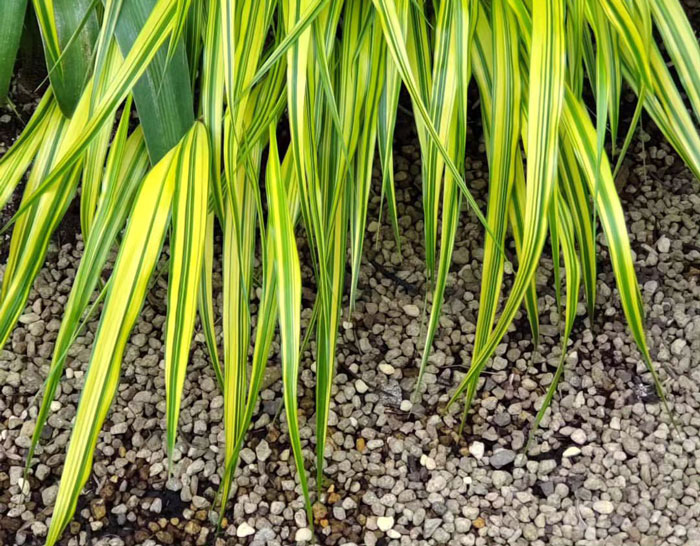 Image credits: goo.kyo
Image credits: goo.kyo
Most ornamental grass species need well-drained soil. Ordinary garden dirt will work just fine. Make sure to plant them in raised garden beds to ensure good drainage over time.
Watering
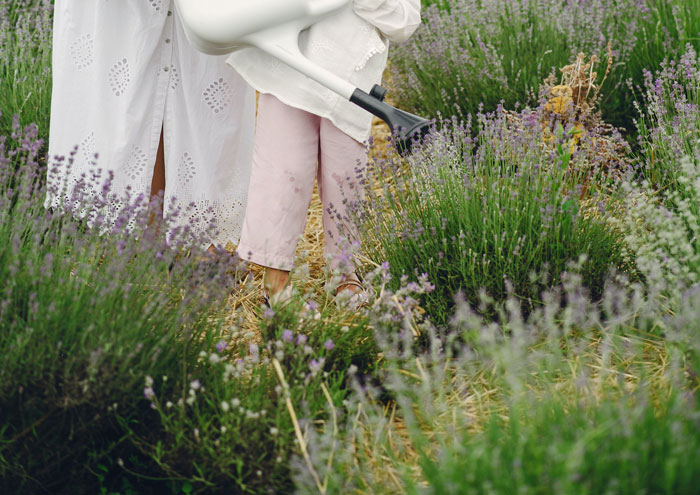 Image credits: Gustavo Fring
Image credits: Gustavo Fring
They should get at least one inch of water a week from rain or watering. You can also set up a drip irrigation system to water the plants and protect them from root rot.
Fertilizing
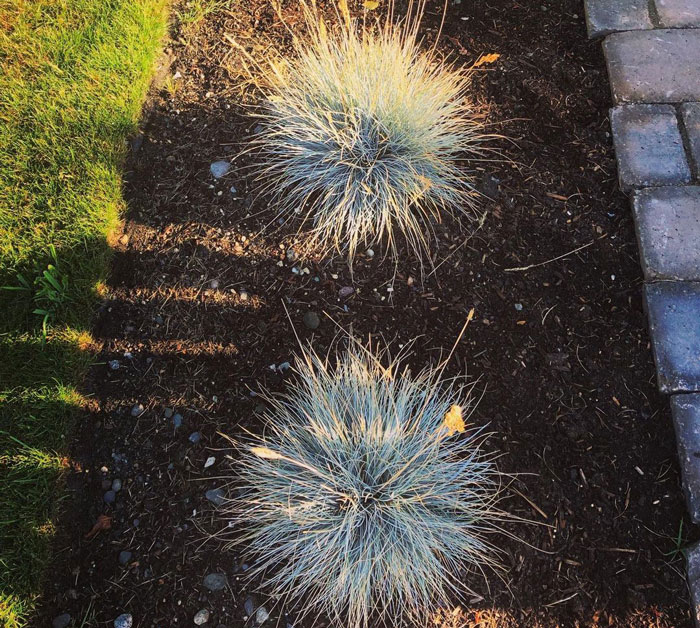 Image credits: livingwestmodern
Image credits: livingwestmodern
Ornamental grasses don’t need much fertilizer. You can apply mulch to the base of the plant to moisten the soil. Don’t overuse fertilizers because excess nitrogen can lead to diseases and weaken the plant.
Planting
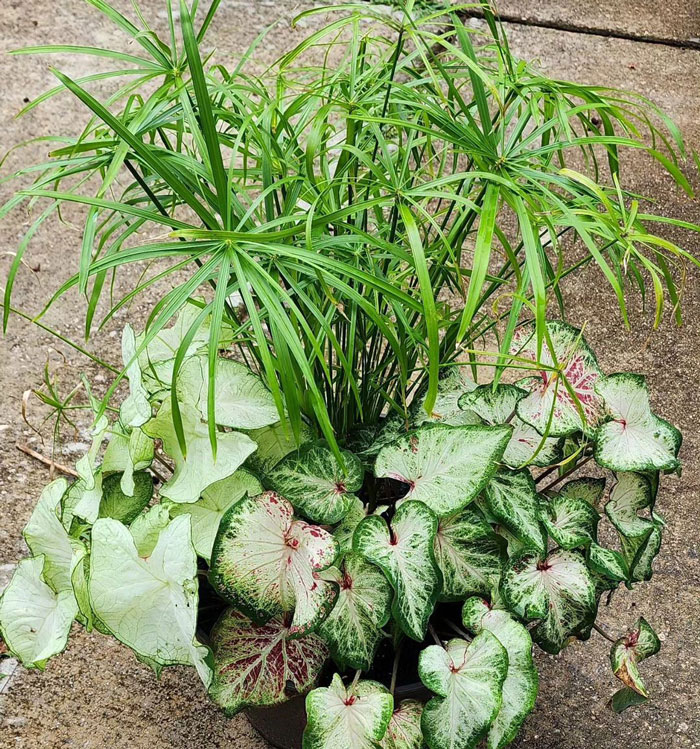 Image credits: melissa_wets_her_plants
Image credits: melissa_wets_her_plants
Warm-season grasses should be planted in the spring, and cool-season grasses should be planted in the fall. Tall plants should be placed far apart to ensure they reach full height and maturity.
If you plan to grow them in containers, loosen the roots and place them in the soil. After that, make sure that the soil is firm. The root ball should not have any air pockets around it.
Cutting or Pruning
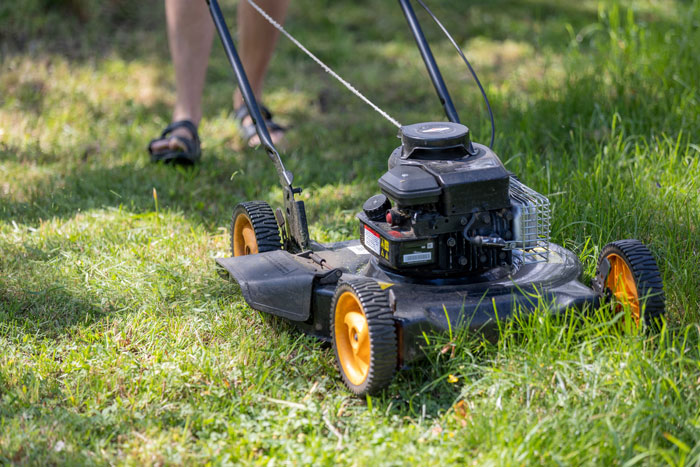 Image credits: Carl Tronders
Image credits: Carl Tronders
You can start cutting them back in late winter or early spring so they stay beautiful throughout the winter. It’s best to cut the stem to a few inches above the ground so that it can grow tall again. Use hedge shears, pruners, or electric shears for best results. This should be done in late winter or early spring for the ornamental grasses to add a welcome respite for birds.
Dividing
 Image credits: Anna Shvets
Image credits: Anna Shvets
Dividing ornamental grasses helps to protect them from thinning out or dying out in the center. Ideally, they should be divided every 3–4 years when the plant is still manageable. It can be challenging to dig up an overgrown ornamental grass. Warm grasses should be divided in early spring, whereas cool grasses should be divided in early fall.
First, divide ornamental grass, take a shovel, and separate the root systems. Then, hose off the roots and replant in clumps. Replant immediately so that the roots don’t dry out.
Invasive Ornamental Grass
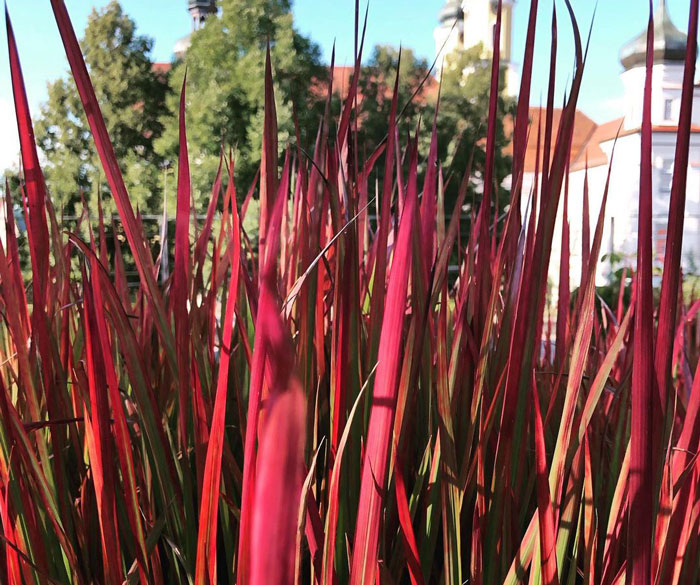 Image credits: juergen_s_d
Image credits: juergen_s_d
Most ornamental grasses can become invasive if they aren’t looked after properly. However, some you should be particularly careful with. Japanese blood grass (Imperata cylindrica) is one such highly invasive plant that is illegal to sell, distribute, or plant in South Carolina.
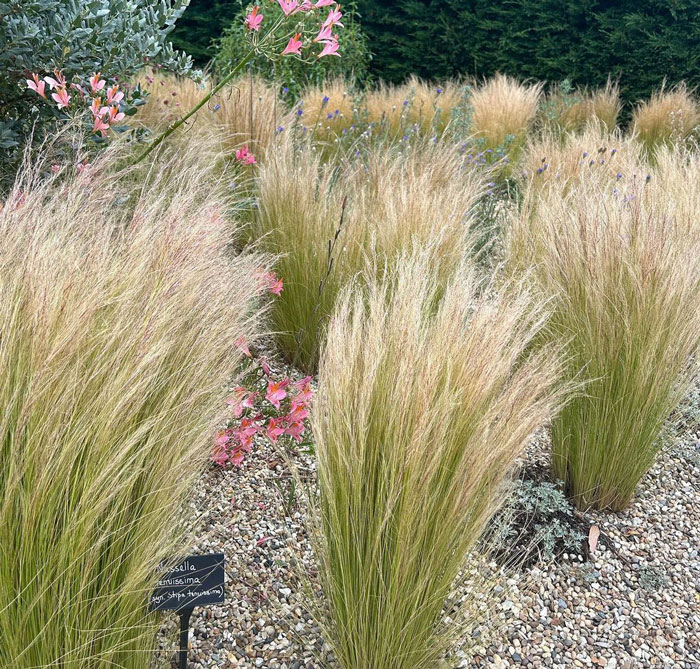 Image credits: thegardendesigngirl
Image credits: thegardendesigngirl
Another invasive variety of ornamental grass is Mexican feather grass (Nassella tenuissima), which has a high and vigorous seed production. It is enlisted as an invasive plant species in California because it produces more than 10,000 seeds, which remain viable for more than four years.
Despite their lovely blooms, ornamental grasses have the potential to outcompete native plant and animal species. This kind of crowding can disrupt the natural ecosystem.
Common Problems With Different Types of Ornamental Grasses
Like all other plants, decorative grasses are also susceptible to diseases and pests. Here are a few common problems that can damage the plants and gardening tips to help you save them:
Rust
One problem often affecting cool-season grasses is rust. You can remove the orange spots by cutting the plants back as soon as they appear.
Disease
Ornamental grasses with low light, excessive fertilization, and poor air circulation might develop a disease. Try to avoid poor growing conditions.
Fungus
If the plants end up with fungus, divide them and space them out to promote good air circulation. You can also use a mild fungicide to combat the problem.
Shine the Spotlight on Your Favorite Ornamental Grass
Decorative grasses are easy to grow, don’t require much maintenance, and can transform your yard. Let us know which ornamental grass you liked the most, and share pictures with us when you grow it in your garden. If you are interested in growing other similar plants, you can look at this Asparagus fern guide.
Popular Ornamental Grass Questions Answered
What Happens If You Don’t Cut Back Ornamental Grass?
If you let the decorative grass grow for a long time without cutting it, it will look quite messy. It will also become very difficult to trim or divide the plants later. Some slightly more invasive grass species will spread their seeds in unwanted places.
How to Remove Ornamental Grasses?
To remove ornamental grass from your garden, chop up the large stems with a small hatchet. You can remove the root ball after cutting them closer to the ground. Ensure all roots have been removed, or the plant can grow again.
What Ornamental Grasses Are Toxic to Dogs?
Most ornamental grasses are dog-friendly, but there are a few exceptions that you should be aware of. Arrowgrass (Triglochin palustris) is one such grass that is poisonous and shouldn’t be ingested by a canine.
Can You Trim Ornamental Grasses in Summer?
It is better to trim or prune the ornamental grass when the weather turns colder. Warm-season grasses turn brown during the winter, which is when you can trim them. Cutting them too early can interfere with the flowering season and affect their ornamental value.
For any Australians who may be interested, almost all of these grasses are declared noxious or environmental weeds in a majority of States & Territories
That was just my thought, just a concern had no facts on them. And was thinking some might be invasive in Sweden.
Load More Replies...For any Australians who may be interested, almost all of these grasses are declared noxious or environmental weeds in a majority of States & Territories
That was just my thought, just a concern had no facts on them. And was thinking some might be invasive in Sweden.
Load More Replies...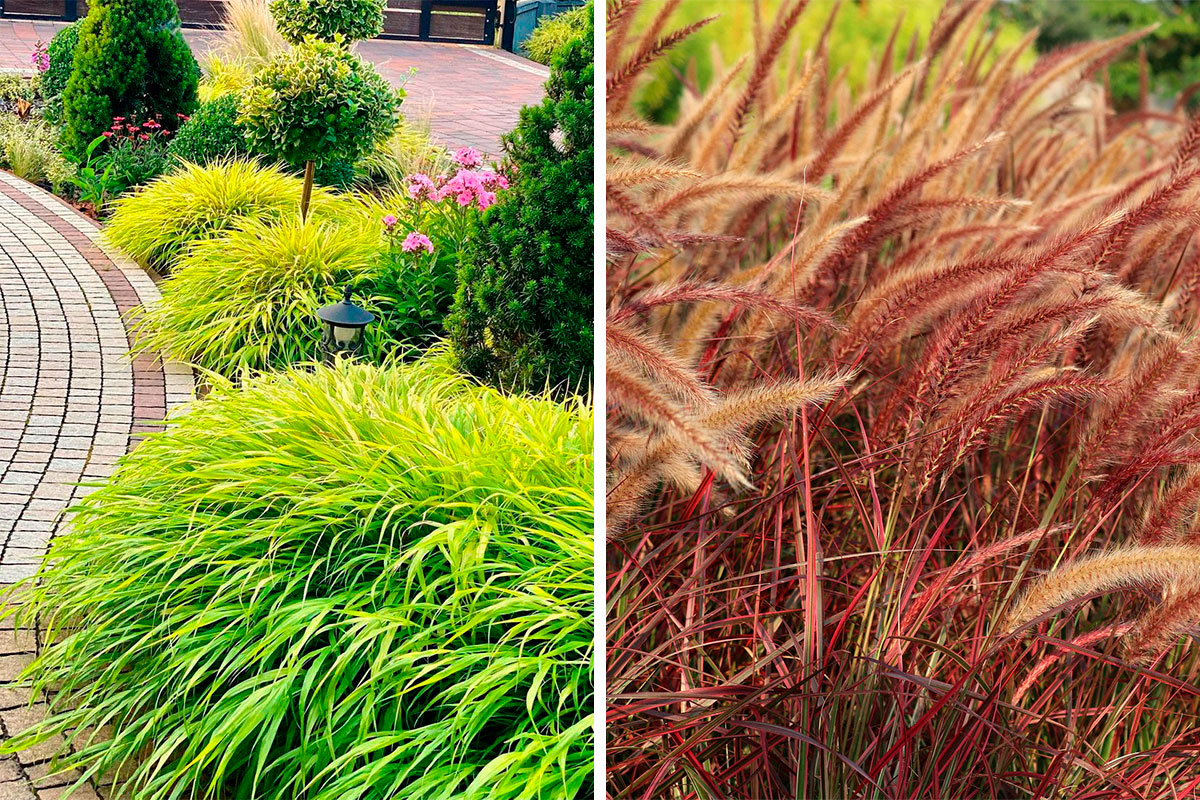
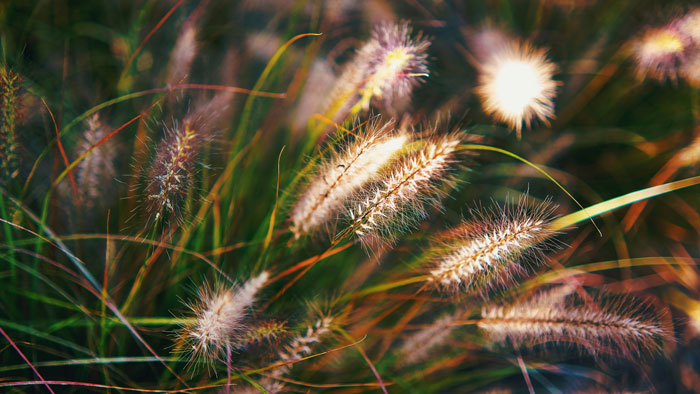 Image credits:
Image credits: 



9
2